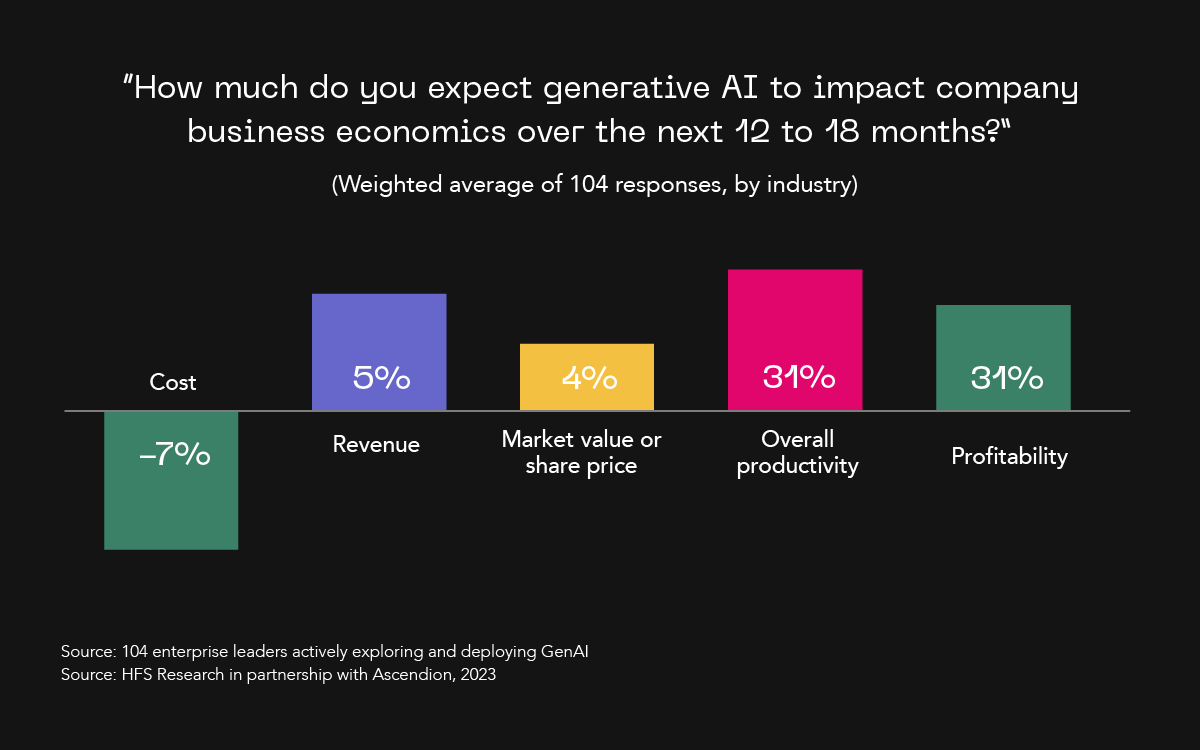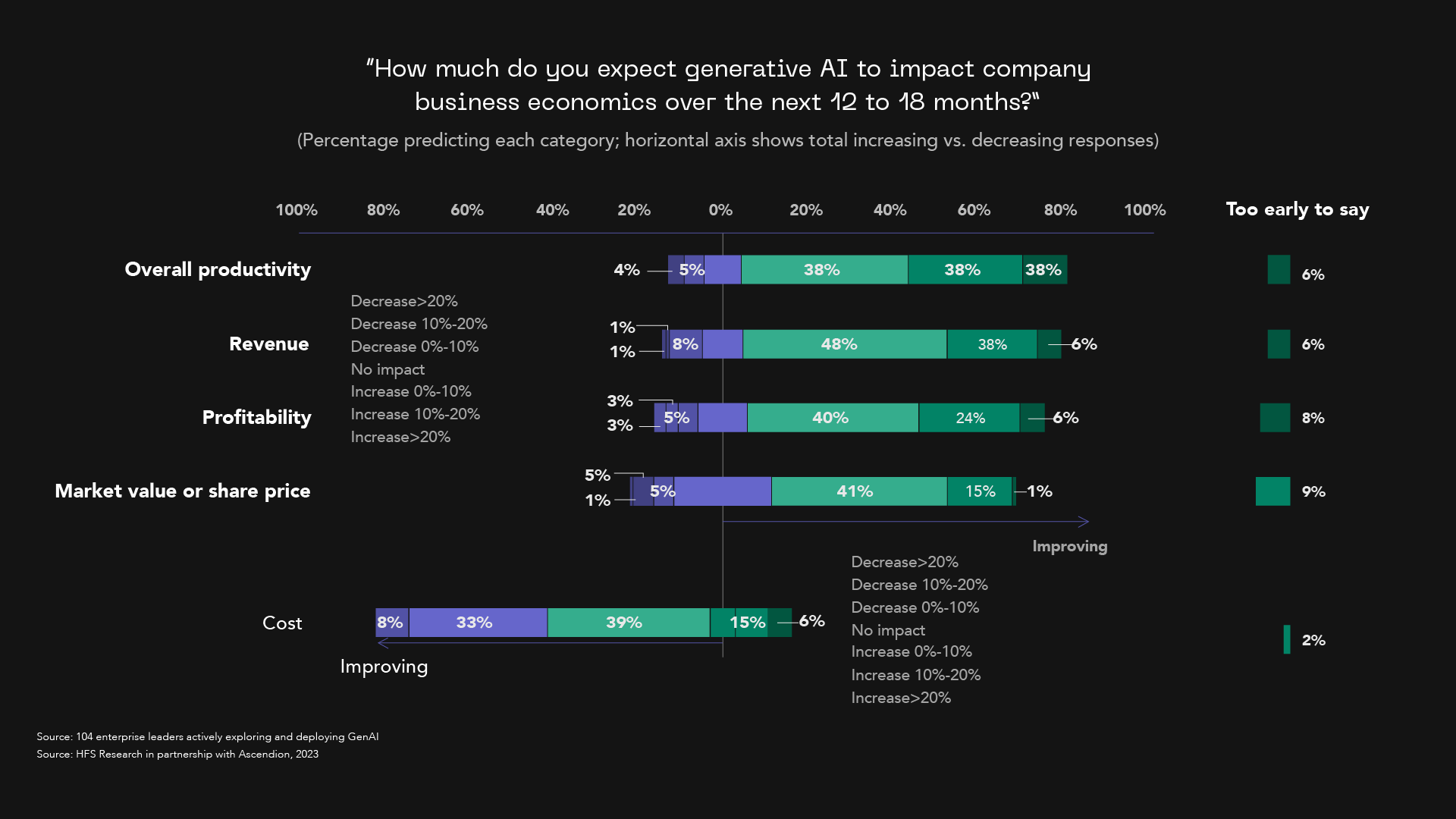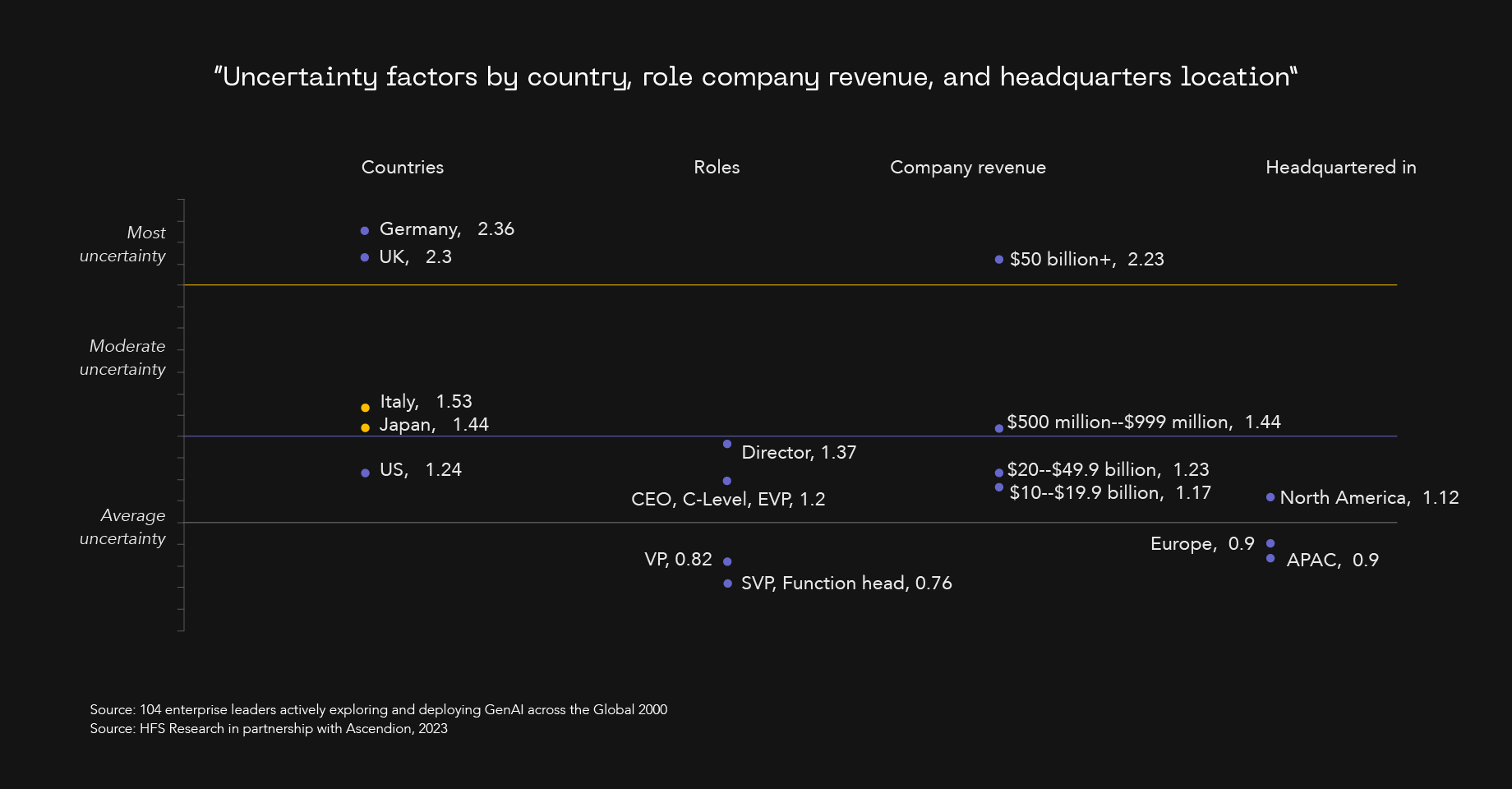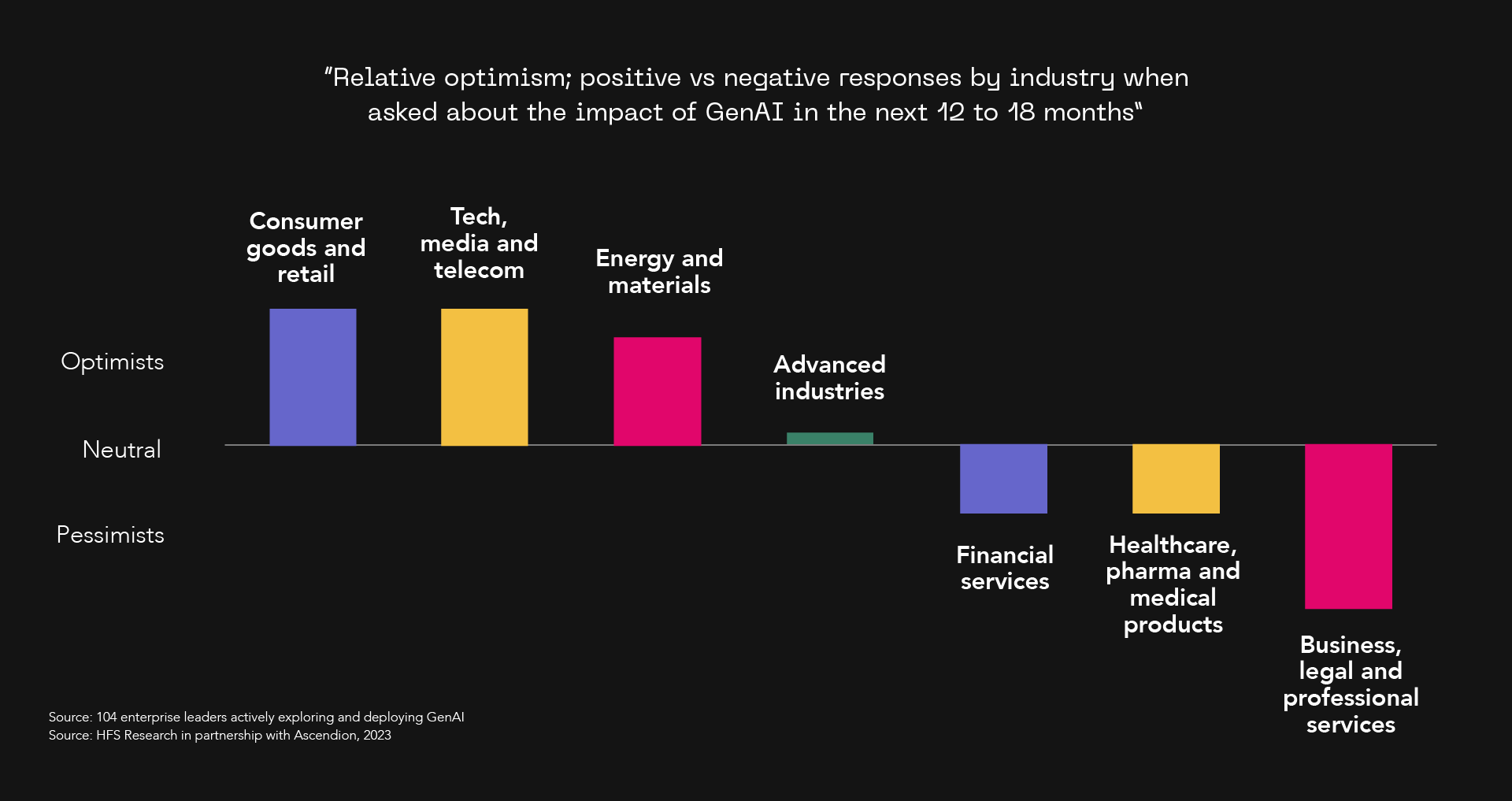The next 12 to 18 months will see generative AI (GenAI) deliver significant, if not spectacular, benefits for business economics in most companies, according to those with experience in the field. But for companies not making the right moves right now, the velocity of this shift will likely become an existential threat.
It’s too easy to be shrill about outsized risks and existential dread – “Do X, Y, Z, or your company will IMPLODE!!!” -but in this case, our data shows expectations that will change the competitive landscape based on how companies execute knowledge work.
We don’t intend to spread panic, but based on our data in Exhibit 1 (and other sources), ignoring critical lessons learned and informed opinions from our GenAI pioneers is unwise.
Grab savings impact first, but don’t overlook other value levers
Imagine your company becomes 15% more cost efficient in the next 18 months. Even if that sounds impossible, 40% of our respondents (see Exhibit 2) expect up to a 10% decrease in costs over the next 18 months due to generative AI-driven productivity gains. A further 33% expect the cost decrease to be in the 10%-20% range, and 8% predict an even greater impact (20%-plus).
“The cost of individual content is so much reduced.” – Michael Fitzke, Director Next Generation Technologies, Mars
In addition, as we’ve pointed out throughout our research series, GenAI’s impact will start small but scale quickly. Cost at the task or workflow level will be impacted first as productivity improves, but a significant number of our respondents also expect an early impact on profitability, revenue, and market valuation to appear in the next several quarters. We expect this impact will continue to increase over the coming years for every company, job, process, or experience deriving value from software that can be turbo-charged with GenAI.
“How do you become more efficient? How do you become effective? How do you actually get ahead of the curve? And AI is coming exactly at the right time to allow us to leverage these new capabilities to solve a problem that was just becoming untenable.” – Sandeep Sacheti, EVP of customer information management and operational excellence for Wolters Kluwer
Don’t let doubt inject risk into your business
Uncertainty among some early adopters could prove a drag on investment and progress. We measured levels of certainty related to GenAI’simpact, creating a potentially useful cautionary view.
Exhibit 3 shows respondents’ uncertainty level by their country, role, scale of the enterprise they work for, and location of that enterprise’s headquarters. We define the uncertainty factor as the number of times more likely than average that respondents report uncertainty about GenAI’simpact on business economics. For example, respondents in Germany reported uncertainty by a factor of 2.36 times more than the average for all countries.
We found the groups showing up as most uncertain in Exhibit 3 were those most likely to select “no impact” or “too early to say” regarding GenAI’simpact on business economics. The “uncertain” group is relatively small compared with those expressing positive sentiments (as represented by those identifying positive business impacts). We’re not saying, “Leaders who are uncertain about GenAIvalue are wrong.” We are pointing out that certain demographics correlate with higher degrees of uncertainty, so be careful not to fall into a potential bias trap where doubt slows essential progress.
Where there is doubt, there is drag. This uncertainty is important to note as it is likely to dampen investment and the pace of adoption.
Optimism about GenAI is unevenly distributed
We dug into our data to identify which industries are overrepresented among positive responses, indicating these industries (see Exhibit 4) have the greatest near-term (12 to 18 months) hopes for GenAIin their businesses.
Exhibit 4 represents industry leaders’ overall sentiment about GenAI’simpact on their industry over the next 12 to 18 months. In optimistic industries, such as consumer goods and retail, leaders were more likely to provide a positive response when we asked them about the impact of GenAIon their business. In the most pessimistic industry, business, legal, and professional services, leaders were more likely to provide a sharply negative response.
The Bottom Line: Neglecting value levers could put some companies on a path to extinction.
Our early GenAI innovators are, unsurprisingly, more likely to envision a positive impact on business economics. In the near term, most see cost being meaningfully impacted as productivity increases, but in the longer term, we can anticipate GenAI tugging at nearly all significant value levers.
Even among our study cohort, the first generation of GenAI leaders, optimism about the future was unevenly distributed. In these early innings of broader GenAI deployment, caution makes good business sense. That said, the next quarters and years will be a rocket ride for companies correctly timing innovation and successfully balancing investment with return. Leaders sitting on the sidelines hoping this all blows over could be facing an extinction event.
About this research
Your Generative Enterprise™ playbook for the future is a HFS Research and Ascendion research program based on more than 20 in-depth interviews and a survey of more than 100 C-suite leaders and practitioners with first-hand experience implementing GenAI in organizations.
Watch out for more, and join us on the journey at Ascendion and HFS Research to access all our research findings.









